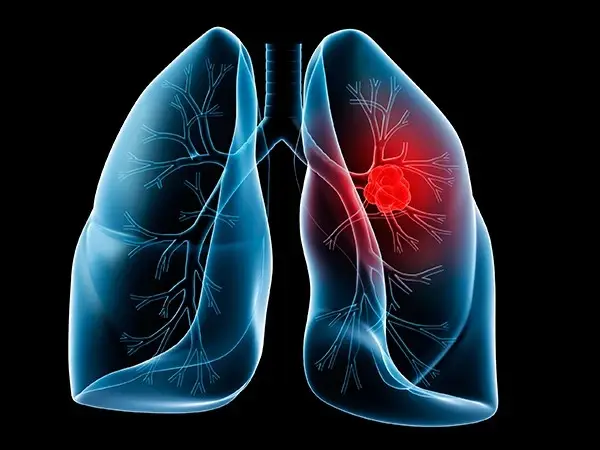By Precious Osadebe
Throughout history, various diseases have wreaked havoc on humanity, claiming millions of lives and altering the course of civilizations.
The top deadliest diseases, such as heart disease, stroke, and respiratory infections account for the majority of deaths each year around the world. These illnesses not only decimated populations but also spurred advancements in medicine and public health.
Here is a list of the 5 deadliest diseases in the world, per report from Healthline:
Deadliest Diseases in the World
1. Ischemic heart disease (IHD)
Ischemic heart disease (IHD), also known as coronary artery disease (CAD), stands as one of the world’s deadliest diseases, responsible for more deaths globally than any other condition. This disease occurs when the coronary arteries, which supply blood to the heart muscle, become narrowed or blocked due to the buildup of plaque, a condition known as atherosclerosis. The reduced blood flow can lead to chest pain (angina), heart attacks, and heart failure. Risk factors include high blood pressure, high cholesterol, smoking, diabetes, and an unhealthy lifestyle.
Prevention
A: exercising regularly
B: reaching or maintaining a moderate weight
C: eating a balanced diet that’s low in sodium and high in fruits and vegetables
D: avoiding smoking, if applicable
E: drinking only in moderation
2. Stroke
Stroke is a leading cause of death and disability worldwide, ranking among the deadliest diseases globally. A stroke occurs when the blood supply to part of the brain is interrupted or reduced, depriving brain tissue of oxygen and nutrients. This can result from a blocked artery (ischemic stroke) or the bursting of a blood vessel (hemorrhagic stroke). The impact of a stroke can be devastating, leading to long-term physical and cognitive impairments or even death.
Risk factors for stroke include high blood pressure, family history of stroke, smoking. Some risk factors of strokes can be lowered with preventive care, medications, and lifestyle changes. In general, good health habits can lowerTrusted Source your risk.
Prevention
If you smoke, consider quitting and drink only in moderation, as these activities increase your risk of stroke.
3. Lower respiratory infections
Lower respiratory infections (LRIs), including pneumonia, bronchitis, and bronchiolitis, are among the world’s deadliest diseases, particularly affecting children, the elderly, and individuals with weakened immune systems. These infections occur in the lungs and airways, leading to symptoms such as coughing, difficulty breathing, chest pain, and fever.
Risk factors include the flu, poor air quality or frequent exposure to lung irritants,
smoking, a weak immune system, asthma and HIV.
In developing countries, LRIs are a leading cause of death, exacerbated by inadequate medical infrastructure and limited access to vaccines and antibiotics.
Prevention
Preventive measures, such as vaccination, improved sanitation, and public health education, are essential in reducing the incidence and severity of LRIs. Early detection and appropriate treatment are critical in managing these infections and preventing complications.
4. Chronic obstructive pulmonary disease (COPD)
Chronic obstructive pulmonary disease (COPD) is a leading cause of death worldwide, characterized by persistent respiratory symptoms and airflow limitation. This progressive disease primarily results from long-term exposure to harmful particles or gases, most commonly from smoking, but also from air pollution and occupational hazards. COPD encompasses conditions such as emphysema and chronic bronchitis.
Individuals with COPD experience symptoms like chronic cough, mucus production, shortness of breath, and wheezing. These symptoms often worsen over time, significantly impairing quality of life and leading to severe respiratory complications. Risk factors include smoking, genetic predisposition, and exposure to environmental pollutants.
Prevention
Despite being preventable and manageable, COPD remains a major global health burden due to delayed diagnosis and inadequate access to healthcare. Prevention efforts focus on reducing smoking rates and improving air quality. If you experience any COPD symptoms, getting treatment as soon as possible improves your outlook.
5. Trachea, bronchus, and lung cancers
Trachea, bronchus, and lung cancers collectively represent some of the deadliest diseases worldwide, accounting for a significant proportion of cancer-related deaths. These cancers originate in the respiratory system, primarily due to long-term exposure to carcinogens such as tobacco smoke, air pollution, and occupational hazards like asbestos. Genetic predisposition also plays a role in the development of these
cancers.
Prevention
Prevention is key in reducing the burden of these cancers, with smoking cessation being the most critical measure. Early detection through screening programs, particularly for high-risk individuals, can improve survival rates. Advances in treatment, including targeted therapies and immunotherapy, offer new hope for patients, but access to these treatments remains a challenge in many regions.








